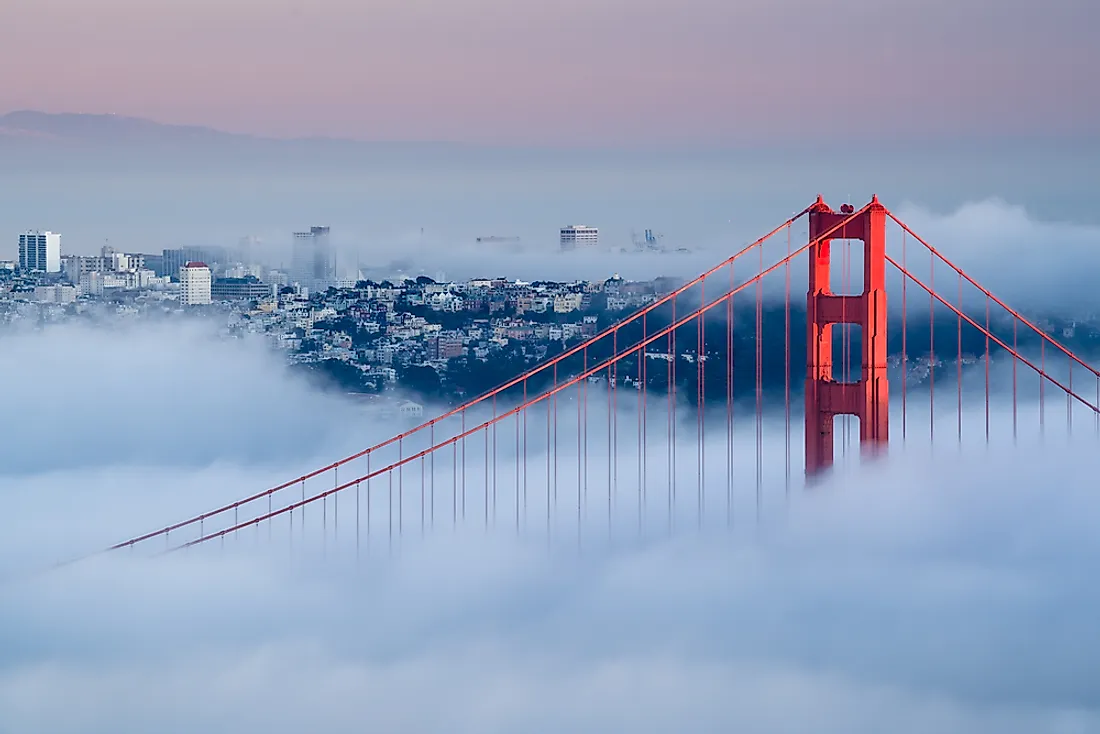The Foggiest Places on Earth

Fogs are the thick or thin clouds which touch the ground and can make it difficult for people to see through it. They are made up of ice crystals or water droplets suspended near the surface of the earth or in the air. They are low lying clouds which are heavily influenced by the topography, wind conditions and nearby water bodies. Fogs tend to affect numerous human activities including warfare, travel, and shipping plus they can reduce visibility to below 0.62miles. Fogs show up when water vapors condense. During the condensation process, the water molecules combine to form minute water droplets which hang in the air. The water droplets present in the atmosphere make the fog visible, remember water vapor is invisible. Some of the foggiest places in the world include:
10. Hamilton - New Zealand
Located on the northern island of New Zealand, Hamilton is the 4th most populous city in the country. Hamilton experiences 125 days annually of an oceanic climate which is characterized by high precipitation. The city experiences wet and cold winters with foggy mornings especially near River Waikato which runs through the city. However, although heavy fogs in Hamilton tend to appear in the morning, they usually burn off at noon producing calm and sunny winter days.
9. Point Reyes - California
Point Reyes is a famous tourist destination and prominent cape on the Pacific coast. Point Reyes is in Marin County, which is about 20 miles from San Francisco. Point Reyes is bounded on the southeastern side by Bolinas lagoon and the northeastern side by Tomales Bay. Point Reyes can get windy and foggy during certain months, and this is the reason why the lighthouse was built below the characteristic high-fog. When foggy, visibility is usually affected, and the light is the only thing which is visible to the ships sailing through this region. Point Reyes experiences over two hundred foggy days annually.
8. Cape Disappointment - Washington
Located at the southwest corner of the state of Washington, Cape Disappointment is one of the foggiest regions in the United States. The cape experiences over 2,552 hours of fog annually which is approximately 106 foggy days.
7. San Francisco - California
San Francisco is well known for its fog, and for good reason. The many landmarks of this northern Californian metropolis is regularly covered by low-lying fog, brought on by a combination of factors like temperature and atmospheric moisture. Fog is especially common during the summer season. However, during the winter, San Francisco is still affected by tule fog, a very dense type of fog unique to the California coast.
6. Mistake Island - Maine
The fog capital of the Atlantic coast is Mistake Island in Maine. Located in the northeastern part of Bar Harbor, Mistake Island receives over 1,600 hours of fog annually, mostly thanks to the close proximity of the chilly Atlantic ocean.
5. Namib Desert - Africa
Located in southern Africa, the Namib is a coastal desert which stretches for approximately 1,200 miles along the Atlantic coasts of South Africa, Angola, and Namibia. The sand-dunes span over 20 miles long and are is the second largest on the globe right after Badain Jaran desert. The temperature along the coast range from 9 to 12 degrees Celsius annually, while further inland the temperature exceeds 45 degrees Celsius during the day while it's freezing at night. The fog which originates from the collision between the warmer and cooler air creates a fog-belt which covers parts of Namib. The desert experiences over 180 foggy days annually.
4. Swiss Plateau - Switzerland
The central plateau is one of the three primary landscapes in Switzerland, found along the Swiss Alps and Jura mountains. During the winter, the Swiss plateau remains still with no exchange to the atmosphere creating a ceiling of higher fog and a cold air lake in this region. The weather here is known as an inversion since the temperature above is higher than the lower.
3. Po Valley - Italy
Po Valley is a crucial geographical feature in north Italy, which extends over 400 miles in west-east directions. Mist and fogs are quite frequent in the valley - however, it has been noted that fog is becoming less and less common over the years. One possible reason for this has been the temperature change from global warming.
2. Atacama Coast - Chile
The Atacama Desert is a 600 mile strip of the Pacific coast on the western part of the Andes Mountains. The Atacama is the driest non-polar desert on the globe, and it features Felsic lava, sand, rough terrain and salt lakes among others. Although the Atacama is one of the driest regions on earth, the cloud carries humidity. The coastal fogs forms on shores of Chile and then it is blown inland as cloud banks which the locals call ‘’camanchaca’’. Most of the precipitation on the desert comes in the form of mist from the Pacific Ocean.
1. Grand Banks - Newfoundland
The Grand Banks are a cluster of underwater plateaus on the southeastern parts of Newfoundland in eastern North America. These regions are shallow with a depth ranging from 50 to 300 feet. The northern cold Labrador Current mixes with the eastern warm gulf-stream current, creating a thick fog almost every day. The Grand Banks are quite close to where the Titanic sunk, and the shipwreck expedition for the Titanic began. Other than the fog, the mixing of the water helps lift nutrients, making this area one of the best fishing places on earth.











